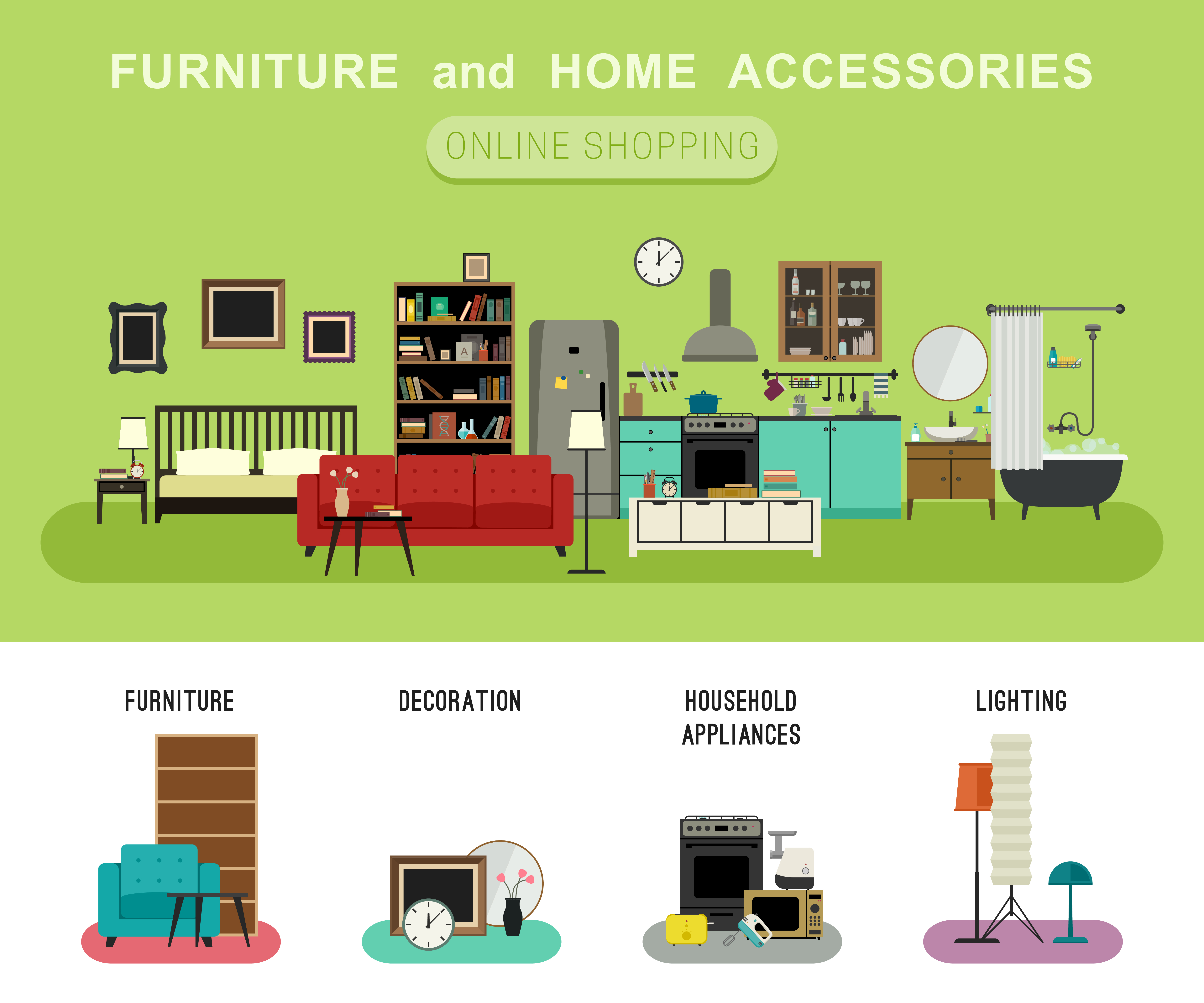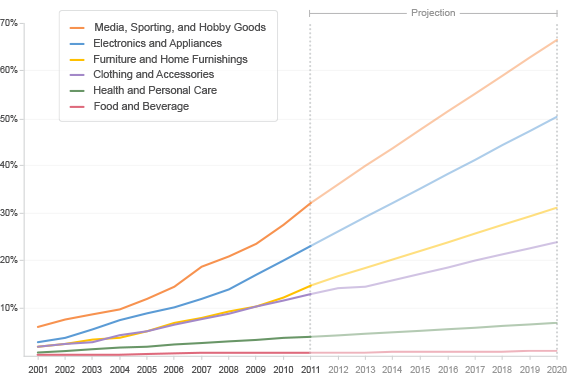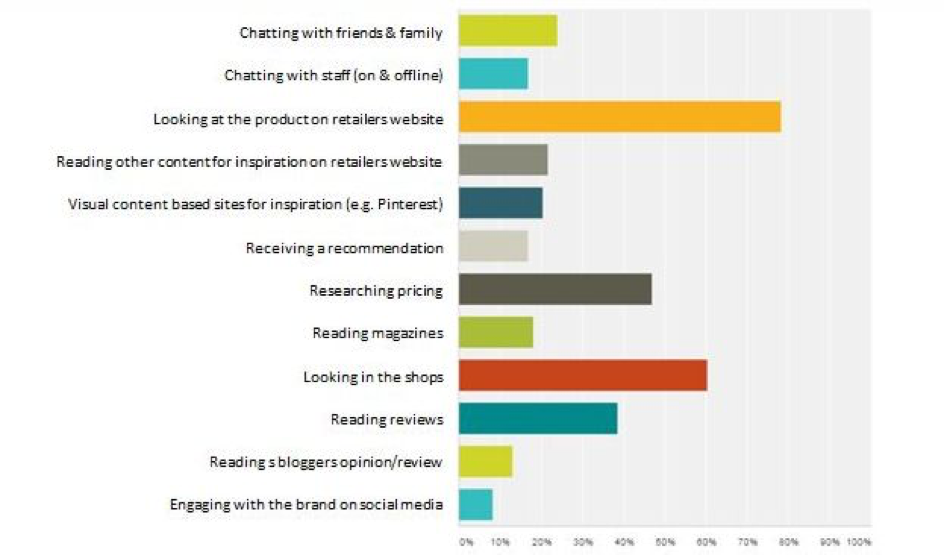Furniture brands should care about changing customer behaviour. Both manufacturers and retailers are in danger of missing a growing opportunity to sell their collections online. In this blog post we will show that, contrary to popular believe, a growing number of people are willing to buy furniture they haven’t seen or felt in real life. Doesn’t that effect your way of doing business?
Buying furniture is a high involvement decision; it’s not something we buy very frequently, it’s durable and often it comes at a high price.
It’s also an emotional decision; our furniture is an expression of our personality. We could say customers aren’t buying a product, they are buying an image of themselves and a way to spend valuable time comfortably with family and friends. (source)
Because of this, customers are eager to gather information before the purchase. They might do this in-store, but research shows a growing number of consumers is conducting online research. In the next point we explain how online research has an impact on in-store purchases.
Online research leading to in-store purchases
According to Cisco (2012), nearly 74% of consumers conduct online research before making an in-store purchasing decision. A 2013 Mississippi State University research finds similar numbers specifically for home furniture. They also compared their results with earlier research, showing an increase of nearly 18% in 5 years’ time!
A lot of these internet searches are conducted on mobile devices. Research by Furniture Today shows almost half of furniture store visitors use their smartphone before and during their visit to look up information.
| Consumers used a smartphone during their most recent visit to a furniture store
% of consumers who own a smartphone |
|
| Before the store visit | 34% |
| During the store visit | 18% |
| Before and during the store visit | 48% |
The Cisco research we mentioned earlier, states 40% of US respondents use mobile phones for in-store digital content delivery and 35% use tablets for the same purpose.
This means consumers hop from one information channel to another.
For retailers, this “cross-channel” shopping demands a new approach to win and retain customers. For example, you could consider using in-store kiosks to provide your clients with all the information they want and need.
Digital content can trigger consumers to buy. Bringing this content into your store can be a very powerful influencer in the buying decision at the point of sale. Have you considered a mobile sales enablement tool to use these numbers to your advantage?
Online research can also lead to online purchases. You ‘ve read that right, we are not kidding. Consumers are willing to buy furniture & accessories online. Don’t take our word for it, let the numbers speak!
Online research leading to online purchases
Online sales are a growing business. This is also true for furniture & home furnishings, as you can see in the table below. Estimates are that online sales for this sector will grow up to 32% in 2020, that’s over a doubling in 10 years’ time!
This Mississippi State University research from 2013 also proves a major shift in attitudes toward shopping and purchasing furniture online is occurring as we speak (or wright). In 5 years’ time it shows that people who purchase furniture online has doubled to 21,6%. An additional 52% is willing to purchase furniture via internet in the future.
In case you didn’t get that number: 52% of consumers is willing to purchase furniture online!
Below you’ll find an image by Leapfrogg. They conduct monthly questionnaires on their 800 people survey panel, about e.g. “what factors influence purchasing decisions for consumers buying big ticket items online” (> £100).
Their findings indicate that “the retailer’s website” is by far the most important method of online furniture purchase consideration (78,31%).
You might notice that this number is much higher than “looking at the product in the store” (60%)!
This definitely shows people are more willing to buy furniture online than we’d like to believe…
The research goes on to show that 9 out of 10 will shop a site that contains specific price information. This is something a lot of manufacturers and retailers are still anxious about… Maybe it’s time to embrace e-commerce as a whole and consider a web shop?
Even manufacturers of customizable furniture pieces can integrate a web shop in their site. CPQ software with product configuration tools can ease the process! You can read more about it in our previous blog.
Beside website searches, let’s not forget social media like Pinterest. 75% of internet-using adults use at least one social network (source). These sites allow us to connect with strangers over shared commonalities, as well as our family and friends. Customers can gather information, round up lots of great ideas or just show off their latest purchase!
According to the Leapfrogg research, it doesn’t lead up to lots of online sales compared to the retailer’s website, although 20% is not a neglectable number. It could lead to extra in-store movement as well, and let’s not forget brand exposure!
How do you fill that empty online space?
All the research mentioned above, makes clear the furniture industry has enormous opportunities to attract and engage online shoppers, increasing sales numbers at the same time.
Since buying furniture has always been perceived as dependent on visual and tactile in-store experiences, there’s a large gap to fill.
8 out of 10 overall consumers already bought home furnishings online (Furniture Today). There’s an obvious shift in online furniture buying behaviour. Therefore, a strong, online presence is crucial to remain competitive.
Keep potential customers informed and allow them to get a realistic picture of what the furniture would look like in their own homes. A wide range of tools is available to help you achieve this. You can take a look at this one, for example.
Even if you are a furniture manufacturer who’s not planning on selling your collection directly to consumers, a website should be maintained with information about your products and where they can be found.
You should know that 75% of consumers have difficulties of finding your authorized dealer after the online search is done. In other words: 1 out of 4 can’t find your product in the physical world! (source)
If you’re up for it, you can even start thinking out of the box!
Wouldn’t it be great starting your own community, letting your customers share “before and after” decorating projects?
Why not sell your products to consumers, cutting your nearest retailer in on the deal?
We would love to discuss the future of your business with you, sharing our thoughts and ideas in a long-term collaboration. You’re welcome to contact us anytime!




